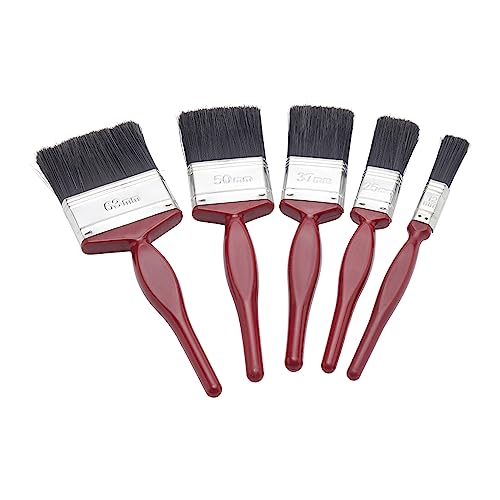The Importance of Choosing the Right Paint Brush for Corners
When it comes to painting corners, having the right paint brush can make all the difference. Corners can be tricky to paint, as they often require more precision and control than flat surfaces. Using the wrong paint brush can result in uneven coverage, drips, and an overall messy finish. That’s why it’s essential to choose the best paint brush for corners.
Consider the Bristle Type
One of the first things to consider when selecting a paint brush for corners is the bristle type. There are two main types of bristles: natural and synthetic. Natural bristles are typically made from animal hair, such as hog or ox hair. Synthetic bristles, on the other hand, are made from nylon or polyester.
If you’re working with oil-based paint, natural bristles are generally considered the best option as they hold and release the paint more easily. If you’re using water-based paint, synthetic bristles are a better choice as they don’t absorb the water and become too soft. They also tend to be more durable and easier to clean.
Choose the Right Brush Size
The size of the brush is another important factor to consider when painting corners. A brush that is too large may not provide enough control, while one that is too small may take longer to cover the area. It’s important to find a brush size that allows for precise application without sacrificing efficiency.
For most corners, a brush with a width of 1 to 2.5 inches is typically sufficient. However, it’s always a good idea to have a few different sizes on hand to accommodate different corner sizes and angles.
Opt for a Brush with a Pointed Tip
When painting corners, a brush with a pointed tip can be incredibly helpful. This allows for more precise application in tight spaces, ensuring that you can reach every nook and cranny. Look for a brush with a tapered or chisel-shaped tip to make painting corners a breeze.
Keep in mind that you may also want to consider the angle of the brush handle. A brush with an angled handle can provide better control and make it easier to reach corners without straining your hand or wrist.
Consider the Brand and Quality
Lastly, it’s important to consider the brand and quality of the paint brush. While there are many options available, not all paint brushes are created equal. Look for reputable brands that are known for producing high-quality brushes.
A high-quality paint brush will typically have bristles that are firmly attached to the handle and won’t shed during use. The handle should also be comfortable to hold and provide a good grip. Investing in a brush of good quality may cost a bit more, but it can ensure better results and greater durability.
When it comes to painting corners, choosing the right paint brush is critical. Consider the bristle type, brush size, shape, and quality to find the best brush for your corner painting needs. With the right brush in hand, you’ll be able to tackle corners with ease and achieve a professional-looking finish.






